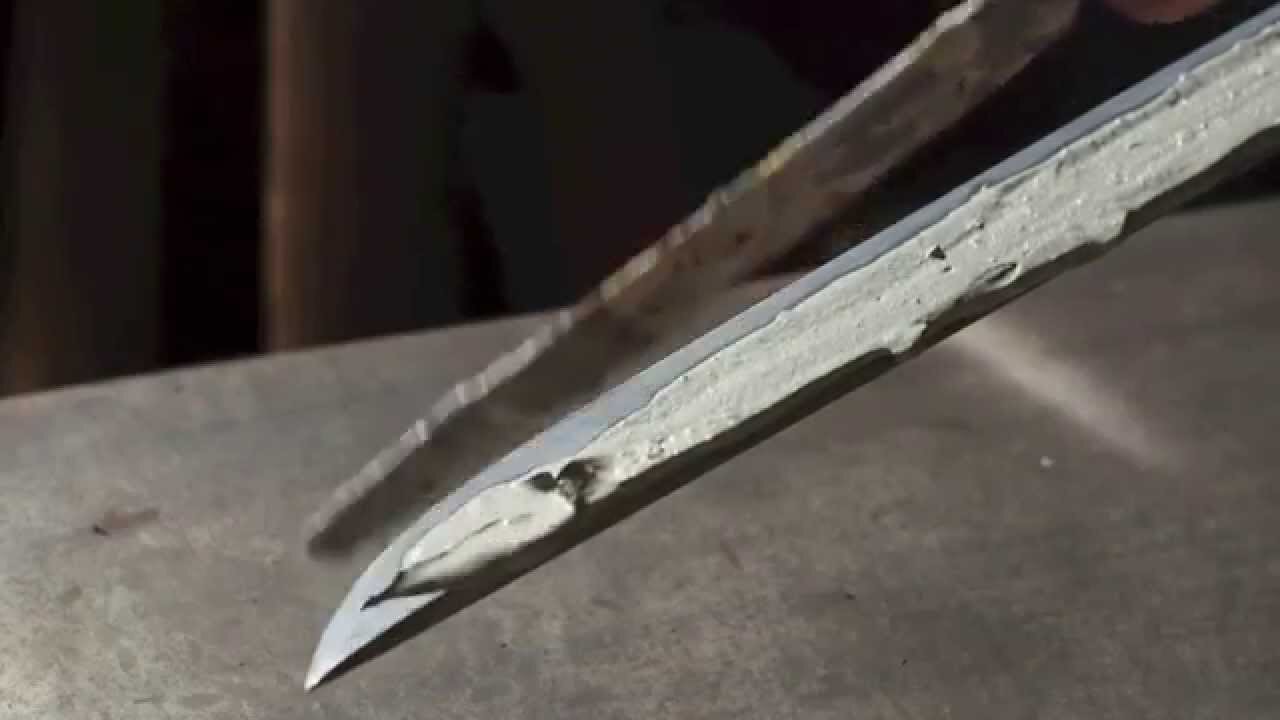Premium Only Content

SOTW #6 - Yaki-Ire - A Tanto Blade is Born
http://islandblacksmith.ca/process/
Process of Clay Tempering a Tanto Blade
Once the steel is shaped as much as possible in its softer state, it is coated with a thin layer of clay along the edge and a thicker layer on the body and spine. During the hardening process, the split second difference in cooling time caused by the clay layer creates two different hardness areas in the same piece of steel. The edge cools faster and forms a very hard steel structure called martensite while the body cools slower and forms a very tough steel structure made of ferrite and pearlite. The boundary between these two areas is called hamon and is commonly seen as a frosted wavy line down the length of a polished sword blade.
When the clay is fully dry, a charcoal fire is used to heat the steel slowly and evenly, taking care not to overheat any part of it and working in the dark for accurate colour viewing. First the spine is heated to bring the whole blade to just below temperature, and then it is flipped over to focus heat on the edge. When the entire edge is at the correct temperature, it is plunged into a hot water bath, edge down, and held until cool (yaki-ire). The hardness is checked with a file and the process repeated if necessary. After hardening, the clay is removed and the steel is heated slightly again to remove some of the internal stresses (yaki-modoshi). Once this process is finished, and if the steel survives, the blade is ready for Togi, hand polishing.
more: http://islandblacksmith.ca/process/yaki-ire-clay-tempering/
-
 1:44:50
1:44:50
The Quartering
3 hours agoJ6 Hostage Release Delayed, ICE Raids Begin, Woke Pastor Vs Trump & Biden's Letter To Trump!
55.5K34 -
 LIVE
LIVE
Dr Disrespect
5 hours ago🔴LIVE - DR DISRESPECT - TRIPLE THREAT CHALLENGE - EXTREME EDITION
4,150 watching -
 6:51
6:51
Chef Donny
3 hours agoMaking Omelets With Dave Portnoy | What's For Lunch
5.87K2 -
 LIVE
LIVE
Film Threat
18 hours agoSECTION 31 REVIEW! BUT IS IT STAR TREK? | Hollywood on the Rocks
97 watching -
 11:16
11:16
Tactical Advisor
4 hours agoNew Aimpoint/Glock COA Optic (FIRST LOOK)
3401 -
 3:53
3:53
SLS - Street League Skateboarding
5 days agoFrom ABQ to LA - Mariah Duran’s Journey | Kona Big Wave “Beyond The Ride” Part 2
6.85K1 -
 LIVE
LIVE
Mally_Mouse
19 hours agoLet's Yap About It - LIVE!
271 watching -
 16:47
16:47
Neil McCoy-Ward
8 hours ago"We've Never Seen Anything Like It!!!" (🇬🇧 Says Private Jet Pilot)
9.54K11 -
 LIVE
LIVE
G2G Gaming Channel
6 hours agoSmite&Fortnite, Chancletazo&Helmet . Same thing if you ask me!! #RumbleGaming
127 watching -
 1:28:06
1:28:06
Russell Brand
4 hours agoInside Trump’s Inauguration: Media Frenzy, Pardons, and Power Plays – SF524
154K91